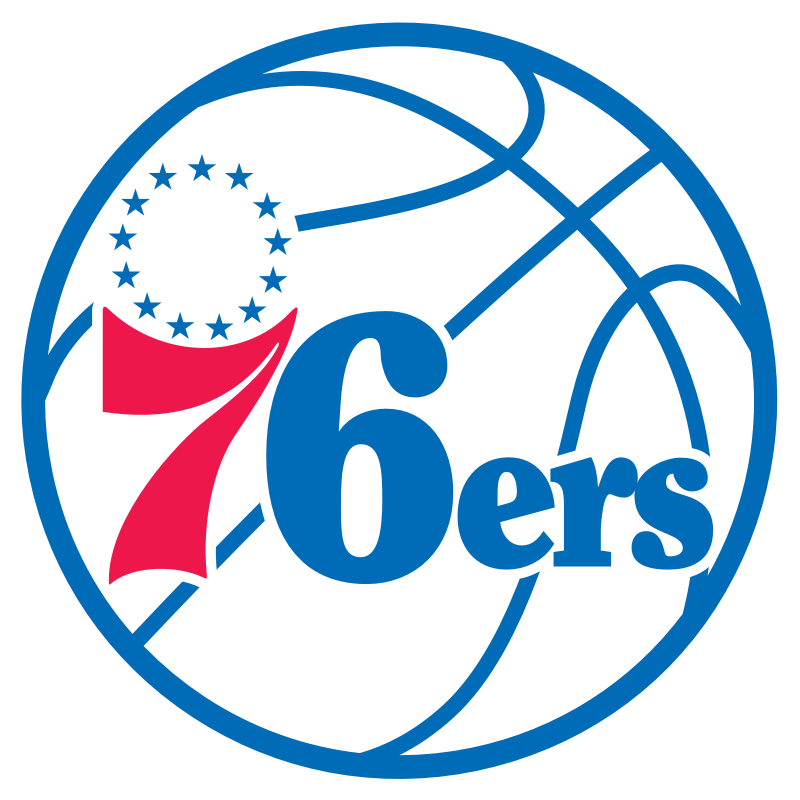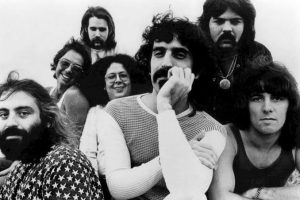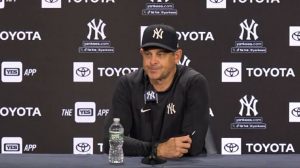
George McGinnis Dies at 73; Powered His Way to Basketball Stardom
He won two titles with the Pacers of the A.B.A. before joining Julius Erving on the N.B.A.’s 76ers, but it was 35 years before the Hall of Fame inducted him.
George McGinnis, whose rare combination of size and agility made him a pillar of two early 1970s championship teams in the upstart American Basketball Association, but whose heralded pairing with Julius Erving on the N.B.A.’s Philadelphia 76ers failed to fulfill expectations of a title, died on Thursday in Indianapolis. He was 73.
The Indiana Pacers, the team with which he won his A.B.A. titles, said his death, in a hospital, resulted from complications of cardiac arrest, which he suffered last week at his home in Indianapolis. McGinnis had struggled to walk in recent years after undergoing multiple back surgeries because of a hereditary condition, the team said.
McGinnis played at the high school, college and professional levels in basketball-obsessed Indiana, where he broke Oscar Robertson’s scholastic scoring records while leading Washington High School in Indianapolis to a 31-0 record and a championship in 1969.
As a forward, he averaged 30 points and 14.7 rebounds in his one season at Indiana University before joining his hometown Indiana Pacers. The Pacers immediately won successive A.B.A. championships, though McGinnis, surrounded by the veterans Mel Daniels, Roger Brown and Bob Netolicky, was not the team’s unquestioned star until his second season, when he averaged 27.6 points and 12.5 rebounds per game.
At a chiseled 6 feet 8 inches, 235 pounds, McGinnis was a harbinger of basketball’s athletic revolution, featuring taller players who could be brawny around the basket but more agile away from it with each passing decade, navigating skillfully in open space.
“Big guys in my era couldn’t handle the ball,” he said in an interview with the Naismith Memorial Basketball Hall of Fame before he was inducted into it in 2017, an honor that many believed was egregiously overdue 35 years after he retired. “But I could dribble with my left hand, my right hand and take guys outside.”
He credited those skills to the coaching he had growing up in Indiana, where “fundamentals are well taught,” he said.
Len Elmore, a Pacers teammate for one season — McGinnis’s last in Indiana before joining the 76ers in 1975 — said in a telephone interview that he harked back to McGinnis when LeBron James, slightly bigger at 6-foot-9 and 250 pounds, entered the N.B.A. in 2003 with the Cleveland Cavaliers.
“Similar size, strength, mobility,” Elmore said, “I remember saying it immediately — George was LeBron before LeBron. You couldn’t believe that with his body he could be that agile.”
One distinctive part of McGinnis’s game was his midrange jumper, a right-handed shot-put-like release that made purists cringe. “It was different, but he made it work for him,” Elmore said.
After leading the A.B.A. in scoring, averaging 29.8 points, and sharing the league’s 1974-75 Most Valuable Player Award with Erving, his future 76ers teammate, McGinnis left the cash-strapped Pacers, calling his departure “a dollars and cents thing.”
In a challenge to the N.B.A.’s constitution, he tried to circumvent Philadelphia’s draft rights by signing with the New York Knicks. But when the league voided the deal, McGinnis joined the 76ers, accepting a six-year contract for $3.2 million (the equivalent of about $18.3 million today). It was one season before the team acquired Erving from the New York Nets as it entered the N.B.A. with three other A.B.A. teams, including the Pacers.
“George was the turnaround factor in pro basketball in this town,” Pat Williams, the team’s general manager, told Sports Illustrated in 1982. “Julius put up the walls and a roof, but it was George who built the foundation.”
The 76ers’ slogan for McGinnis’s first season in Philadelphia was “Let George Do It.” Led by McGinnis, who was voted to play in the first of his three N.B.A. All-Star games, the 76ers increased their win total to 46 from the previous season’s 34 but lost in the first round of the playoffs.
Erving’s arrival electrified the sport, though questions abounded on whether the two prolific forwards could coexist. “It was inevitable that people would say we hated each other, but Julius and I knew it wasn’t true, and we were above it,” McGinnis said in the Sports Illustrated article.
The 76ers were within two victories of fulfilling their supposed destiny, taking the first two games against the Portland Trail Blazers in the 1976-77 league finals. But the Bill Walton-led Blazers won the next four. McGinnis struggled with his shot until the last game in Portland, when he scored 28 points.
Trailing by two with one last possession in Game 6, the 76ers’ head coach, Gene Shue, called a play for McGinnis. Erving, who had already scored 40, was bewildered by Shue’s bypassing him and Doug Collins, the team’s best pure shooter.
After another disheartening playoff exit the following season, the 76ers dealt McGinnis to the Denver Nuggets, landing Bobby Jones, whose staunch defense better complemented Erving and helped the 76ers win the title in 1983.
McGinnis did not have a long career, especially compared with James’s 21st-century standard. His performance declined in Denver, in part because of an Achilles’ tendon injury. He returned to the Pacers during the 1979-80 season, finishing his 11th and final pro season, 1981-82, with an average of 4.7 points over 76 games.
George F. McGinnis was born on Aug. 12, 1950, in Harpersville, Ala., about 30 miles southeast of Birmingham, the son of Burnie and Willie (Keith) McGinnis. His father was a carpenter. With a daughter, Bonnie, the family settled on the west side of Indianapolis.
During McGinnis’s senior year of high school, his father died after falling off scaffolding at a construction site — days after watching George score 53 points and grab 30 rebounds in an All-Star game. McGinnis, who was also an all-state football player, said he left Indiana University early to help support his mother.
He expressed regret that he had missed out on playing for the Indiana coach Bobby Knight by one season, speculating, “I think it would have given me different values.” (Knight died in November.)
George McGinnis, in midair, holding a basketball above a hoop. He is in a basketball arena and wearing a Philadelphia 76ers uniform which reads “Sixers” with his number, “30,” below it.
George McGinnis in 1975. A star forward, he joined the Philadelphia 76ers in 1975. The slogan for his first season on the team was “Let George Do It.”Credit…James Drake/Sports Illustrated, via Getty ImagesGeorge McGinnis, whose rare combination of size and agility made him a pillar of two early 1970s championship teams in the upstart American Basketball Association, but whose heralded pairing with Julius Erving on the N.B.A.’s Philadelphia 76ers failed to fulfill expectations of a title, died on Thursday in Indianapolis. He was 73.
The Indiana Pacers, the team with which he won his A.B.A. titles, said his death, in a hospital, resulted from complications of cardiac arrest, which he suffered last week at his home in Indianapolis. McGinnis had struggled to walk in recent years after undergoing multiple back surgeries because of a hereditary condition, the team said.
McGinnis played at the high school, college and professional levels in basketball-obsessed Indiana, where he broke Oscar Robertson’s scholastic scoring records while leading Washington High School in Indianapolis to a 31-0 record and a championship in 1969.
Image
A black-and-white photograph of George McGinnis holding a basketball on the court as three defenders surround him.
McGinnis led Washington High School in Indianapolis to a 31-0 title run in 1969.Credit…Frank Fisse/IndyStar, via Imagn
As a forward, he averaged 30 points and 14.7 rebounds in his one season at Indiana University before joining his hometown Indiana Pacers. The Pacers immediately won successive A.B.A. championships, though McGinnis, surrounded by the veterans Mel Daniels, Roger Brown and Bob Netolicky, was not the team’s unquestioned star until his second season, when he averaged 27.6 points and 12.5 rebounds per game.
At a chiseled 6 feet 8 inches, 235 pounds, McGinnis was a harbinger of basketball’s athletic revolution, featuring taller players who could be brawny around the basket but more agile away from it with each passing decade, navigating skillfully in open space.
“Big guys in my era couldn’t handle the ball,” he said in an interview with the Naismith Memorial Basketball Hall of Fame before he was inducted into it in 2017, an honor that many believed was egregiously overdue 35 years after he retired. “But I could dribble with my left hand, my right hand and take guys outside.”
He credited those skills to the coaching he had growing up in Indiana, where “fundamentals are well taught,” he said.
Len Elmore, a Pacers teammate for one season — McGinnis’s last in Indiana before joining the 76ers in 1975 — said in a telephone interview that he harked back to McGinnis when LeBron James, slightly bigger at 6-foot-9 and 250 pounds, entered the N.B.A. in 2003 with the Cleveland Cavaliers.
Editors’ Picks
This Silly Museum About Crabs Has Serious Things to Say
Going Backward Was the Biggest Trend of 2023
The Belfast Victorian Was in ‘a Terrible State.’ Was It Worth the Risk?
“Similar size, strength, mobility,” Elmore said, “I remember saying it immediately — George was LeBron before LeBron. You couldn’t believe that with his body he could be that agile.”
McGinnis in midair about to shoot a basketball from his right hand. Other players, including Julius Erving, his 76ers teammate, are on the court surrounding him. Spectators are sitting in the stands in the background.
McGinnis during Game Two of the N.B.A. finals against the Portland Trail Blazers in 1977.Credit…James Drake/Sports Illustrated, via Getty Images
One distinctive part of McGinnis’s game was his midrange jumper, a right-handed shot-put-like release that made purists cringe. “It was different, but he made it work for him,” Elmore said.
After leading the A.B.A. in scoring, averaging 29.8 points, and sharing the league’s 1974-75 Most Valuable Player Award with Erving, his future 76ers teammate, McGinnis left the cash-strapped Pacers, calling his departure “a dollars and cents thing.”
In a challenge to the N.B.A.’s constitution, he tried to circumvent Philadelphia’s draft rights by signing with the New York Knicks. But when the league voided the deal, McGinnis joined the 76ers, accepting a six-year contract for $3.2 million (the equivalent of about $18.3 million today). It was one season before the team acquired Erving from the New York Nets as it entered the N.B.A. with three other A.B.A. teams, including the Pacers.
“George was the turnaround factor in pro basketball in this town,” Pat Williams, the team’s general manager, told Sports Illustrated in 1982. “Julius put up the walls and a roof, but it was George who built the foundation.”
The 76ers’ slogan for McGinnis’s first season in Philadelphia was “Let George Do It.” Led by McGinnis, who was voted to play in the first of his three N.B.A. All-Star games, the 76ers increased their win total to 46 from the previous season’s 34 but lost in the first round of the playoffs.
Erving’s arrival electrified the sport, though questions abounded on whether the two prolific forwards could coexist. “It was inevitable that people would say we hated each other, but Julius and I knew it wasn’t true, and we were above it,” McGinnis said in the Sports Illustrated article.
The 76ers were within two victories of fulfilling their supposed destiny, taking the first two games against the Portland Trail Blazers in the 1976-77 league finals. But the Bill Walton-led Blazers won the next four. McGinnis struggled with his shot until the last game in Portland, when he scored 28 points.
A posed photograph of a basketball team, including McGinnis, a trainer and assistant coach. They are wearing maroon jerseys that read “West.”
The Western Conference All-Stars in 1979. McGinnis is seated on the left, in the front row.Credit…NBAE, via Getty Images
Trailing by two with one last possession in Game 6, the 76ers’ head coach, Gene Shue, called a play for McGinnis. Erving, who had already scored 40, was bewildered by Shue’s bypassing him and Doug Collins, the team’s best pure shooter.
After another disheartening playoff exit the following season, the 76ers dealt McGinnis to the Denver Nuggets, landing Bobby Jones, whose staunch defense better complemented Erving and helped the 76ers win the title in 1983.
McGinnis did not have a long career, especially compared with James’s 21st-century standard. His performance declined in Denver, in part because of an Achilles’ tendon injury. He returned to the Pacers during the 1979-80 season, finishing his 11th and final pro season, 1981-82, with an average of 4.7 points over 76 games.
George F. McGinnis was born on Aug. 12, 1950, in Harpersville, Ala., about 30 miles southeast of Birmingham, the son of Burnie and Willie (Keith) McGinnis. His father was a carpenter. With a daughter, Bonnie, the family settled on the west side of Indianapolis.
During McGinnis’s senior year of high school, his father died after falling off scaffolding at a construction site — days after watching George score 53 points and grab 30 rebounds in an All-Star game. McGinnis, who was also an all-state football player, said he left Indiana University early to help support his mother.
He expressed regret that he had missed out on playing for the Indiana coach Bobby Knight by one season, speculating, “I think it would have given me different values.” (Knight died in November.)
Image
McGinnis in 2017 wearing an orange blazer with the logo of the Naismith Memorial Basketball Hall of Hame. He is speaking at a lectern with the same logo.
Many believed McGinnis’s induction into the Naismith Memorial Basketball Hall of Fame in 2017 was egregiously overdue, coming 35 years after his professional retirement from the sport.Credit…Nathaniel S. Butler/NBAE, via Getty Images
McGinnis was married for 43 years to Lynda (Dotson) McGinnis, who had been a high school girlfriend. She died of cancer in 2019, not long after he underwent surgery to address a back issue, spinal stenosis, that forced him to walk stooped with a cane or walker. His survivors include his sister, Bonnie McGinnis.
After his playing years, McGinnis worked as a broadcaster in Indianapolis, where he and his wife founded GM Supply Company, a provider of special tooling and abrasives to manufacturers, in 1991.
McGinnis remained a popular fixture in the state’s basketball community, and in September was inducted into the Indiana University Athletics Hall of Fame.
Twenty years earlier, he told The New York Times, “One of the great things about being a basketball player in Indiana is that they never forget you.”





